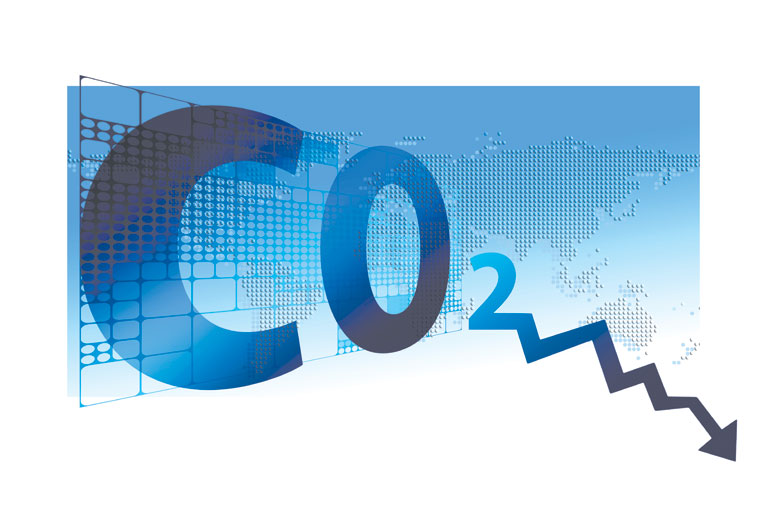Achieving net zero regardless of business size

Across the globe, calls for reducing carbon emissions have heightened not only among governments but especially among businesses. Many large ones, such as Amazon and Apple, have stated their commitments to be carbon-neutral in succeeding decades; while Microsoft stated its commitment to be “carbon-negative,” (removing carbon dioxide from the atmosphere) by 2030.
Small businesses, which comprise the larger share of businesses in the Philippines, can also pursue carbon neutrality like any other firm.
In an article from The Economist Applied, Nick Aster, director of marketing for North America at sustainability consultancy South Pole, shared that the process is the same regardless of an organization’s size. This process, in a gist, involves understanding their carbon footprint by measuring their emissions; setting an ambition; and taking action by reducing and offsetting those emissions.
Treading this carbon-neutral path has to be kick-started by embracing systems change, as Eric Rondolat, chief executive officer of lighting company Signify, stressed. Formerly, the lighting business of multinational Philips achieved carbon neutrality last September and reduced its CO2 emissions by 70%.
Sharing in a World Economic Forum (WEF) article what they learned in achieving carbon neutrality, Mr. Rodolat noted that success on emissions depends on making it the core to an organization’s strategy.
“This means drafting business goals that align with and can be accomplished through efforts to reduce emissions,” he wrote on WEF’s website. “Other steps are also key, including establishing science-based targets, dissecting every aspect of your operations to save energy and emissions, and investing in measurable, worthy projects that offset unavoidable carbon emissions.”
In line with dissecting operations, which also has to do with understanding energy use and measuring emissions, small businesses can make use of online tools, such as standards from the Greenhouse Gas Protocol and the SME Carbon Footprint Calculator from Carbon Trust. A step-by-step guide on taking action on climate change by the Science Based Targets initiative can also serve as a guide.
Another important part of embracing system change is getting people across the organization involved. Another term for this is what PricewaterhouseCoopers’ (PwC) Colm Kelly calls “wholesale transformation,” which requires companies to ensure accountability at the top, aside from realigning corporate strategy, adapting operating model and supply chain, and providing necessary financing, among others.
“Success will require that the CEO, the CFO, the chief innovation officer, the chief risk officer and other top corporate leaders join the sustainability chief, alongside a substantial investment in the right skills,” PwC’s global leader for purpose, policy and corporate responsibility wrote.
In terms of making strategies work, becoming more efficient, offsetting inevitable emissions, and collaborating with other organizations are significant steps to take.
One of the ways to achieve efficiency is by looking for greener alternatives. This can even be applied in film-making, where the largest carbon footprint is found to come from building one-off sets and using generators for power. “To fix this problem, we move filming to ‘practical’ sets [locations that already exist] with the ability to tie into the power grid,” Jason Cherubini, co-founder of production house Dawn’s Light Media, was quoted as saying in The Economist Applied.
Embracing renewables, shifting from traditional sources that emit massive carbon emissions, is a significant action to take. For Signify, this was done in phases, and since such a shift cannot be taken seriously, careful planning is needed.
“It made sense to prioritize strategic regions with relatively high electricity consumption and/or a more developed level of renewable electricity. Then gradually, we tackled regions with lower consumption and less developed renewable electricity markets,” Mr. Rondolat shared.
Some emissions, however, are unavoidable. This makes offsetting an important component in carbon neutrality plans.
“Offsetting has become an industry in itself and there are myriad options available. Choosing the right partner(s) is therefore important and credibility and traceability of carbon offsetting projects are necessary considerations,” Mr. Rondolat shared, adding that it partnered with South Pole, which helped them navigate various schemes to focus on programs aligned with the company’s corporate social responsibility programs.
Teaming up with like-minded advocates of carbon neutrality is also highly recommended, making the attainment of net-zero targets a collaborative approach. As Mr. Rondolat shared, working with a nonprofit group that works with business and government leaders to tackle climate change introduces them to other organizations taking the same journey.
“Working with respected bodies creates a virtuous circle and amplifies our voice in the corridors of power,” the CEO added. “Through advocacy, accountability, and collaboration, we learn from each other and move faster.”
Reaching carbon neutrality, indeed, takes much effort — starting with realigning strategies and proceeding with utilizing alternatives and collaborating with other organizations. Yet, the path should not end when net-zero goals are achieved, and this is where carbon-negative efforts or doubling net-zero targets come into play.
“It’s tempting to breathe a sigh of relief when the carbon neutrality check box is ticked, but don’t,” he said. — Adrian Paul B. Conoza



